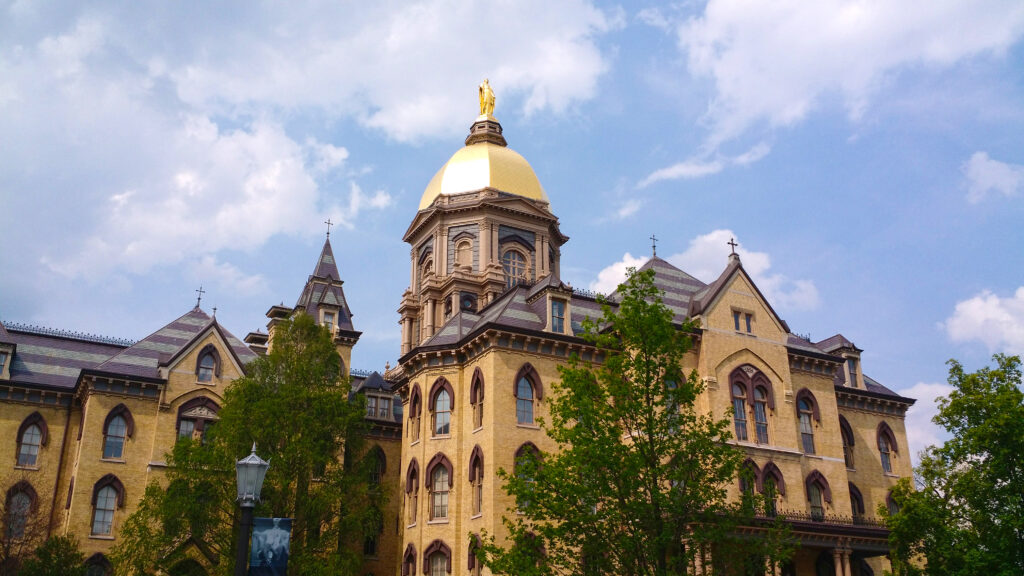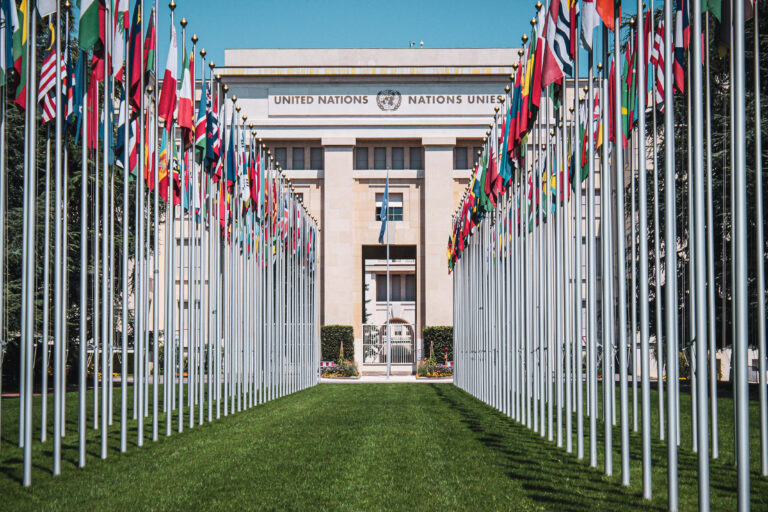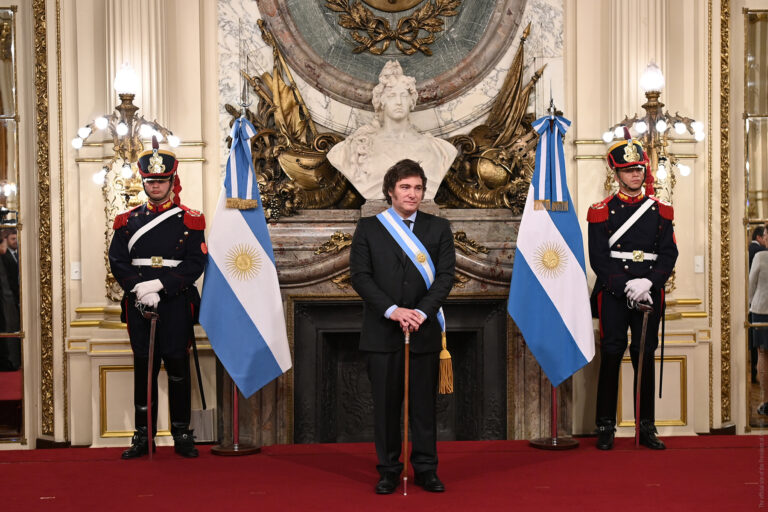“When we invest in clean energy and electric vehicles and reduce population,” Kamala Harris told an audience on July 14th, “more of our children can breathe clean air and drink clean water.”
The next day, the White House explained that Harris had meant “pollution,” not “population.”
But it was too late. We all knew that, for once, she meant what she said.
And it’s nothing new. For a hundred years, the population control movement has regarded people as pollution.
Margaret Sanger, founder of Planned Parenthood, was already talking about eliminating “blacks and browns” a century ago. Dr. José Rolón, an avowed communist, opened the first Birth Control League in 1925.
In 1932, Dr. Cornelius Rhoades a physician funded by the Rockefeller Foundation in Ponce, Puerto Rico, wrote a letter that was published in El Mundo, a leading daily newspaper.
“The Puerto Ricans,” wrote Rhoads, “are beyond doubt the dirtiest, laziest, most degenerate and thievish race of men ever inhabiting this sphere … What the island needs is not public health work but a tidal wave or something to totally exterminate the population period.” [quoted in Donald Critchlow, Intended Consequences (1999: Oxford University Press), page 36]
People were pollution, and the elites had to do something about it.
John D Rockefeller III founded the Population Council in 1952. For the next two decades, the group expanded its population control efforts throughout the world. As it grew, the Council’s members courted Notre Dame’s president, Father Ted Hesburgh, in the 1960s, hoping to garner his support and attract liberal Catholics into the movement.
The Rockefeller and Ford foundations began funding Notre Dame, and Father Hesburgh opened the door, quietly, to Population Council members. They all came from “elite” institutions that Hesburgh esteemed highly. They soon convinced him that Notre Dame could not achieve his goal of “academic excellence,” without government funding. Lyndon Johnson’s “Great Society” was flush with taxpayer dollars – why not use them for the good? With those programs, “Father Ted” could make Notre Dame a truly great university.
There was only one problem. Religious institutions were not eligible to receive those funds, Council members explained, and Notre Dame was owned and administered by the Congregation of the Holy Cross.
Change that governance, they said, and the spigots would open wide.
Bottom line: the only price that Notre Dame had to pay was to declare the school’s independence from the Catholic Church.
And They’re Still Paying…
In July 1967 – 56 years ago – Father Hesburgh hosted twenty-six presidents of Catholic colleges and universities at a conference center in Land O’Lakes, Wisconsin. The group’s stated goal was to discuss the way Catholic universities might join in the renewal of the Church sparked by the Second Vatican Council.
After several days, the conferees produced a document that came to be known as Land O’Lakes Declaration.
The opening paragraph constituted a brazen declaration of independence from Holy Mother Church:
“The Catholic University today must be a university in the full modern sense of the word, with a strong commitment to and concern for academic excellence. To perform its teaching and research functions effectively the Catholic university must have a true autonomy and academic freedom in the face of authority of whatever kind, lay or clerical, external to the academic community itself. To say this is simply to assert that institutional autonomy and academic freedom are essential conditions of life and growth and indeed of survival for Catholic universities as for all universities.”
Father Hesburgh had already prepared Notre Dame for this “declaration of independence.” In March 1967, he successfully led the move to change the governance of the university from the Congregation of the Holy Cross to a lay board of trustees.
And Notre Dame was not alone. As longtime PRI Chairman and Notre Dame Professor of Law Charles Rice explains in his classic, What Happened To Notre Dame, most Catholic universities, around that time, severed their juridical connection with the Church and transferred control to lay dominated boards of trustees. Reverend Leo McLaughlin, S.J., President of Fordham University, explained why:
“One reason that the changes are being made in the structure of the boards of trustees is money…. These colleges simply cannot continue to exist without state aid.”
Insulated from possible interference by religious superiors as well as the hierarchy, the schools proceeded to pursue government funding with vigor.
Mission Accomplished
Notre Dame’s trajectory since then reflects that of most Catholic higher education. With their Catholic identity privatized, Notre Dame’s Catholic character quickly became subdued. Only secular programs could receive government funds. As that funding grew, so did the school’s secular character.
Today, the school rushes to adopt DEI, “Gender,” and LGTB+ programs as fast as the Left can concoct them. Freed from the oppression of orthodox Catholic teaching, Notre Dame, and virtually every other major once-Catholic university, are now inescapably dependent financially on the secular Culture of Death by those golden handcuffs.
America’s Catholic hierarchy didn’t take long to catch on, either. In that era, bishops quickly converted their charities, which for centuries had been independent and supported by voluntary contributions, into NGO’s – “Non-Governmental Organizations.”
These former charities, governed not by the truths of the Catholic Magisterium but by the “soft socialism” of “social justice,” are now permitted to receive government funds. In return, they ally with other “charitable” NGO’s, many of them advocates of funding for abortion and “family planning,” to lobby aggressively for “full funding” of their programs.
Of course, in all cases, strict regulations require that the funds be used only for secular, not religious, purposes. Contraception, abortion, and “gender” programs are secular, and funded; prayer, the Sacraments, and preaching Christ Crucified are not.
And, lest we forget, by definition, virtuous acts of charity must be voluntary (CCC, No. 1804). Taxes, of course, are mandatory. You give, whether you like it or not.
That’s why those NGO’s never bother to thank the taxpayer.
The impact of those decisions made sixty years ago was a profound as it was swift. When Pope Paul VI promulgated Humanae Vitae, his encyclical defending the timeless Catholic teaching on the family, sex, and children, Notre Dame was silent, the bishops (with rare exceptions) were silent, and, when Roe v. Wade came down five years later, it was the Catholic laity, not the hierarchy or the universities, who led the pro-life movement.
There was simply no government funding available to those protecting the lives of the unborn.
In the past century, the population control movement has always perceived the Catholic Church as the world’s strongest defender of life, and thus the movement’s most dangerous enemy. After years of flattery and foundation funding, its leaders skillfully maneuvered Catholic elite institutions into forsaking their magisterial mission for Caesar’s coin.
How ironic that many Catholic leaders today, in both Catholic education and the hierarchy, are silent when the elites tell us that people are pollution.
Ironic, yes. But alas, not surprising.











